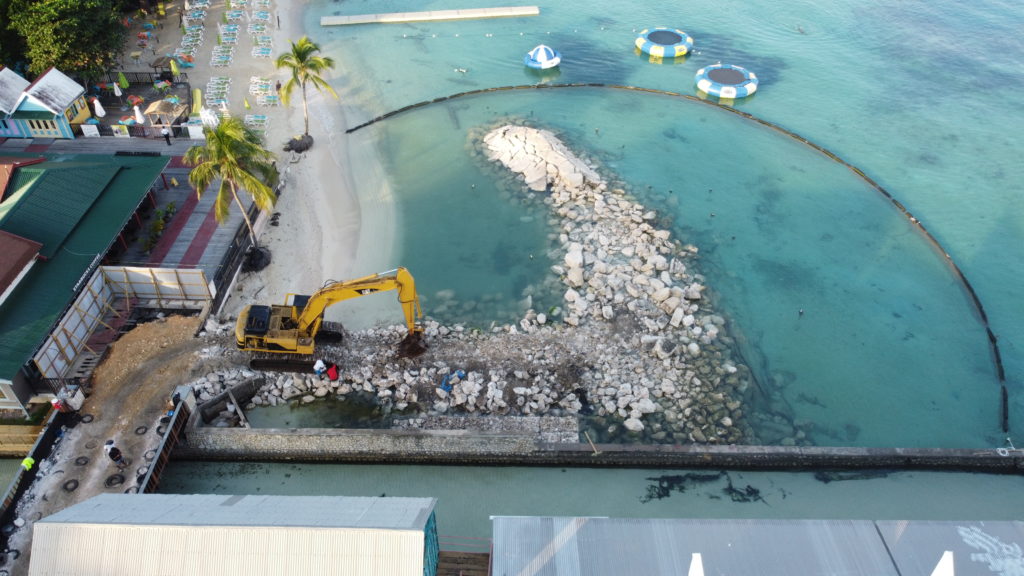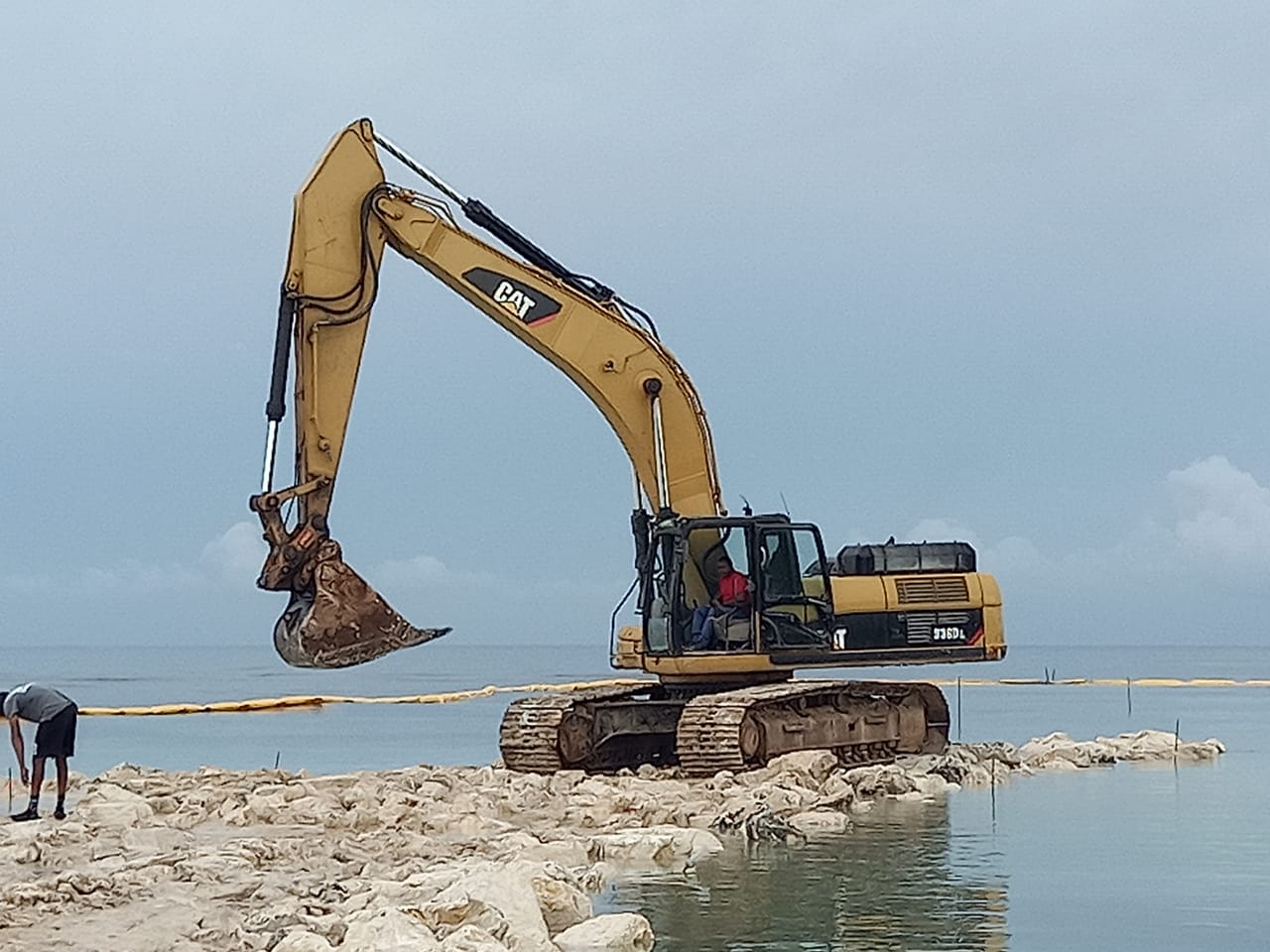 Back in 2001, Chris Hylton had just joined Smith Warner International as a young coastal engineer. The firm had designed the beach and coastal protection for a resort in Jamaica, and Chris was assigned to the job site to make sure the design was executed properly. Coastal engineering is a specialised field and, as had happened on earlier projects, the contractor was inexperienced in coastal construction and did not appreciate the technical requirements associated with the project. Chris wound up spending a week sitting on the excavator re-shaping the resort’s breakwater so that it would function according to the original design. It was situations like this that gradually moved Smith Warner to offer their own construction services in what is called a “design-build” practice.
Back in 2001, Chris Hylton had just joined Smith Warner International as a young coastal engineer. The firm had designed the beach and coastal protection for a resort in Jamaica, and Chris was assigned to the job site to make sure the design was executed properly. Coastal engineering is a specialised field and, as had happened on earlier projects, the contractor was inexperienced in coastal construction and did not appreciate the technical requirements associated with the project. Chris wound up spending a week sitting on the excavator re-shaping the resort’s breakwater so that it would function according to the original design. It was situations like this that gradually moved Smith Warner to offer their own construction services in what is called a “design-build” practice.
To understand the design-build process, it helps to look at how it differs from the traditional approach. Traditionally, the engineers research and design the project, sometimes creating physical models to test their plans. Then they submit applications for the required permits. The client puts out a tender, accepts bids, and selects a contractor. Once construction begins, whenever there is a problem or unforeseen situation, the work stops. The contractor goes back to the engineer and asks for a modification of the design and then quotes a new price for the variation of works. Generally, only after that chain of events can work resume. 
By tendering, the client can bid out the process to a variety of firms and choose the lowest and/or, ideally, the most qualified contractor. The process has been and often still is structured this way to eliminate favoritism or nepotism and to promote competition.
Pros and Cons
But what happens when the engineering firm has a qualified construction arm that submits an attractive bid? Chris Hylton, now Smith Warner International’s Director of Projects explains, “We give the client the option to tender the project, to put it out for bidding to get comparative prices to see if we’re offering a competitive price.” There are pros and cons to the method. “The major pro is that there’s accountability. If something goes wrong, traditionally there’s finger pointing. The engineer says the contractor didn’t build properly, and then contractor says there were problems with the design,” Chris adds. With the design-build approach when an unforeseen problem occurs, “We tend to absorb that cost and go back and address the issues, provided it falls within the scope of works. It’s a cohesive approach.”
Removing the back and forth between contractor, client and engineer moves the project along faster and generally keeps costs down. But firms that practice the design-build approach must take measures to ensure transparency. A con, says Chris, “Is that, from the engineering side, we do the design and we supervise the construction ourselves. So we’re supervising ourselves.” Some clients just aren’t comfortable with that. “There’s always the option for the client to hire a project manager to supervise what we’re doing in the field,” Chris adds, but some clients don’t want to incur that extra cost.
Public and Private
Smith Warner has been using the design-build approach with private sector clients for two decades. But design-build projects for the public sector are more rare. “We’ve had a few instances, but it’s a special request. It goes to the cabinet or parliament of a particular country. They recognise the expertise of the single source.”

In the end, quality, cost, and longevity determine a project’s success. Chris believes design-build is an option worth considering for an increasing number of public sector projects, especially as island nations look to build more resilient coastlines and infrastructure. “We incorporate resilience into every design. All of our designs take into account sea level rise. For clients, for the most part, it’s the cost of construction that’s the driving force.”


